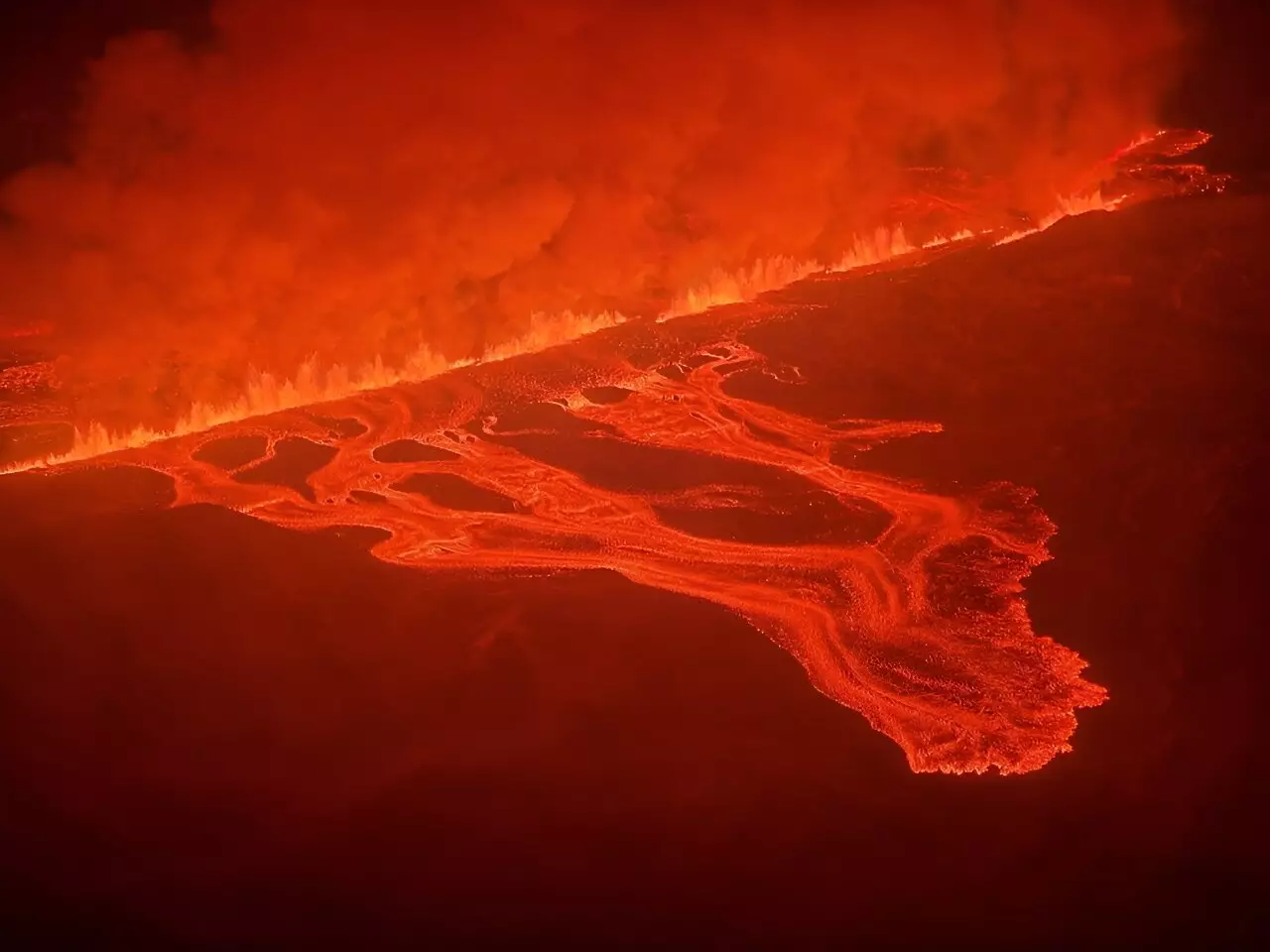In a stunning turn of events, a river of magma beneath an Icelandic fishing village has captured the attention of scientists worldwide. Late last year, a volcanic eruption on the western Reykjanes peninsula revealed a previously unknown level of magma flow. This region had not witnessed an eruption in 800 years, hinting at a reawakening of dormant volcanic activity. While the consequences have been devastating for the local population, this phenomenon has provided a unique opportunity for researchers to delve into the intricacies of Iceland’s volcanic landscape.
November 10, 2023, marked a significant moment in Iceland’s geological history. Over the course of six hours, a surging magma flow formed a 15-kilometer-long and four-kilometer-high underground dyke. Astonishingly, this structure was only a few meters wide, highlighting the extraordinary power of nature. The magma accumulation beneath the region reached a staggering 6.5 million cubic meters before the recent eruption, resulting in an unprecedented flow rate of 7,400 cubic meters per second. To put this into perspective, this volume rivals that of mighty rivers such as the Danube or Yukon, dwarfing the flow rate of the Seine in Paris, which is just 560 cubic meters per second.
What is perhaps more concerning is that the November magma flow was 100 times greater than those witnessed during the previous eruptions between 2021 and 2023. This exponential increase suggests a worrying trend of acceleration in volcanic activity. Furthermore, the escalating underground pressure has triggered hundreds of earthquakes and caused the ground to rise incrementally, resulting in extensive cracks and infrastructure damage. The presence of hidden crevasses poses a significant threat to the inhabitants of Grindavik, with evacuation becoming a recurrent necessity.
To comprehend this unprecedented eruption, researchers have employed seismic measurements and satellite data to analyze the factors behind the magma flow. Iceland’s unique location on the Mid-Atlantic Ridge, a geological rift separating the Eurasian and North American tectonic plates, plays a pivotal role. Over centuries, as these plates gradually moved apart, immense “tectonic stress” accumulated, serving as the impetus for the surging magma to emerge through the subterranean geological crack. This new insight can potentially inform our understanding of volcanic eruptions in other regions worldwide.
As scientists grapple with this new reality, one thing is certain – the town of Grindavik faces an extended period of uncertainty. Lead study author Freysteinn Sigmundsson, a researcher at the University of Iceland’s Nordic Volcanological Centre, cautions that the volcanic activity shows no signs of abating. While the duration of this era remains uncertain, Sigmundsson warns that months of turmoil lie ahead for this vulnerable region. The ongoing eruptions and their associated risks have sparked a debate about the long-term viability of settlements situated on such volatile ground.
While the ultimate decision lies with the authorities, Sigmundsson stresses the importance of preparing for future volcanic events. The researchers’ analysis highlights the likelihood of even more magma reaching the surface, necessitating swift action and contingency plans. The safety and well-being of the affected communities are of paramount importance as they navigate this uncertain chapter.
Beyond Iceland’s borders, the newfound knowledge garnered from this volcanic awakening presents an opportunity to advance our understanding of volcanic activity worldwide. By comprehending the complexities of magma flow and how it is influenced by tectonic forces, scientists can make significant strides in unraveling the causes of eruptions in other regions. This breakthrough could pave the way for proactive measures in mitigating the impact of future volcanic events.
The recent unprecedented magma flow in Iceland’s Grindavik village marks the beginning of a new era of volcanic activity. As the region grapples with the consequences of ongoing eruptions, scientists are diligently studying the underlying forces driving this extraordinary phenomenon. This research not only sheds light on the unique geology of Iceland but also presents an opportunity to expand our knowledge of volcanic activity globally. As the world watches with bated breath, it is crucial that both authorities and communities remain prepared and proactive in the face of this uncertain future.



Leave a Reply